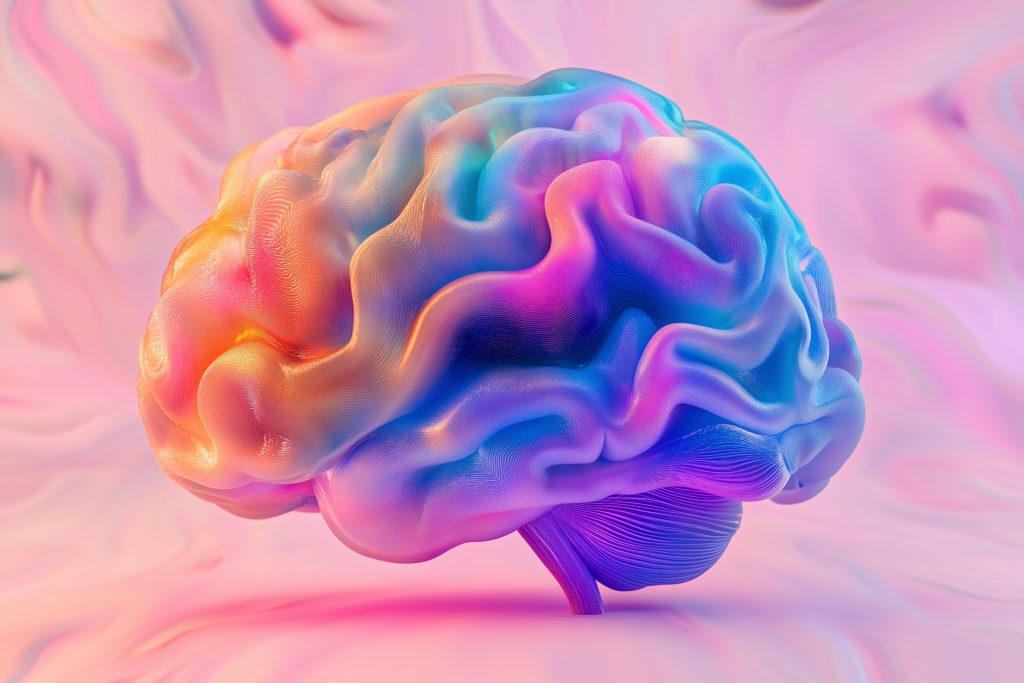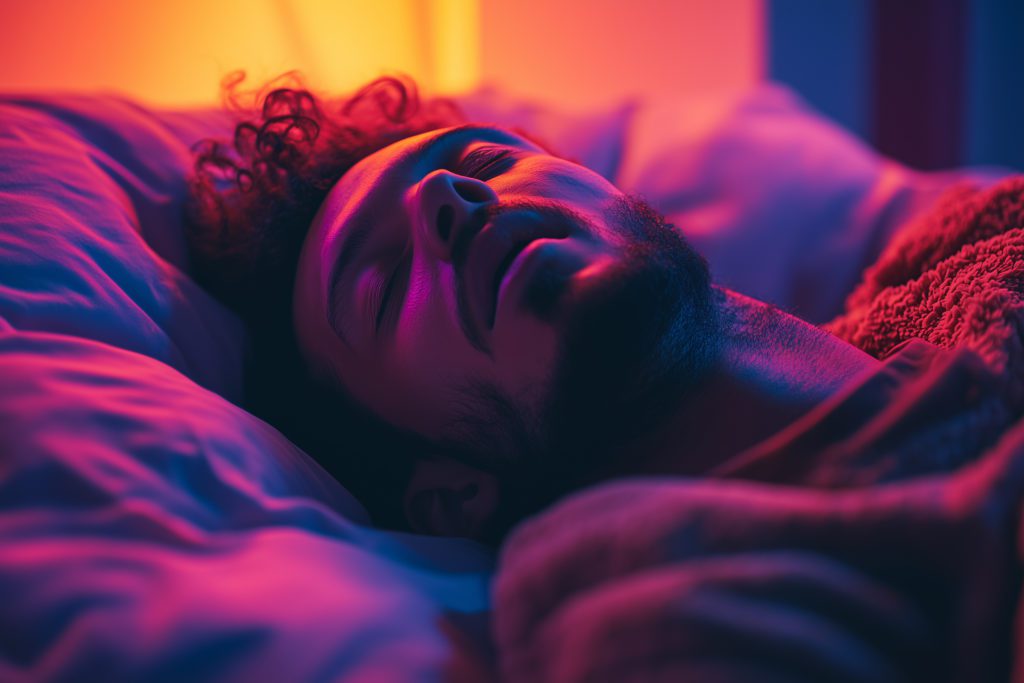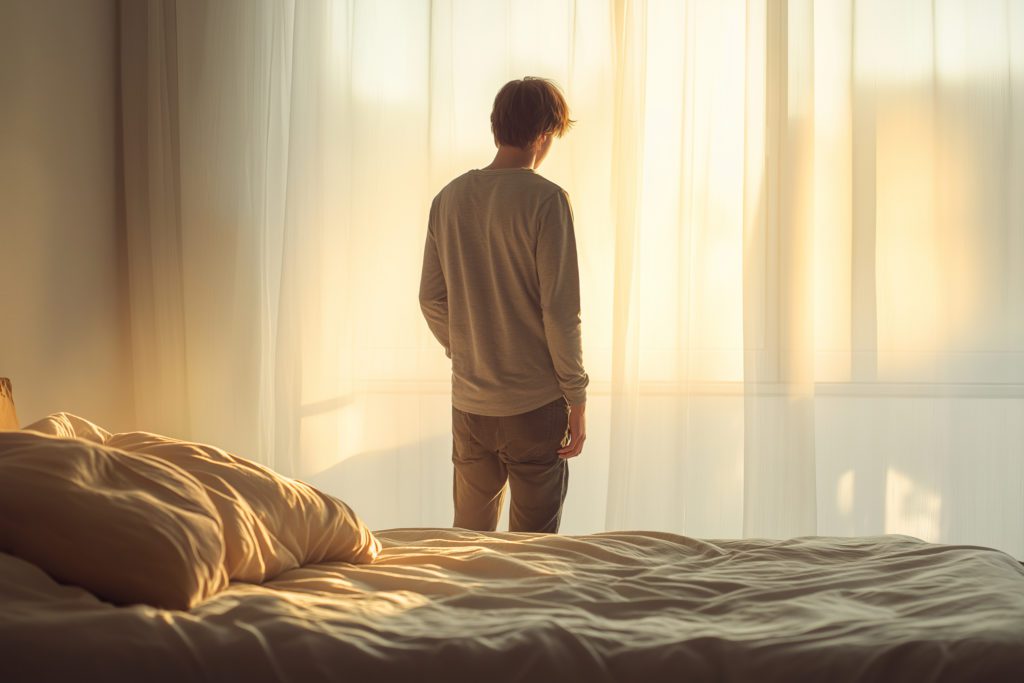
Waking Up Aroused: The Biological Reasons for Morning Wood
Nocturnal penile tumescence, also known as morning wood, is a normal male function. Learn about its biological causes and when to be concerned.

If you find yourself waking up “hard,” congratulations! This means that your nervous system and cardiovascular system are working as they should.
While throughout the day, we typically associate an erection with sexual stimulation, in the morning, that’s not usually the case. In fact, morning wood is simply a normal function of the male reproductive system, and it’s more concerning if it suddenly stops happening regularly.
Behind the Scenes: The Biological Reasons for Morning Wood
Nocturnal penile tumescence (NPT) is the medical terminology for morning wood, or when a person has an erect penis when they awake in the morning (and while they’re sleeping throughout the night).
While it may look like any other erection, NPT is not a typical erection because it is driven by sleep cycles, healthy nerves, and blood flow, not sexual thoughts.
As for the connection to sleep cycles, NPT typically happens during the rapid eye movement (REM) phase of sleep, which is the final stage of sleep in the sleep cycle. However, since we cycle through all four stages during the night, and REM sleep occurs in each one, someone may experience NPT multiple times during the night yet be unaware of them.
Furthermore, since we typically wake up at the end of a REM sleep cycle—and that is when nighttime erections occur—it’s common for men to wake up with an erection.
As for why REM sleep can prompt an erection, it has to do with its effect on neurological stimulators. Specifically, REM sleep influences stimulators that increase blood flow to the penis, which can then lead to an erection.
Testosterone levels may also contribute to your morning wood. Specifically, testosterone is a vital component of the sexual functioning of men and facilitates nearly every aspect of an erection, from nerve activation to blood flow.
Testosterone levels fluctuate during the day but have been shown to be higher early in the morning, which may contribute to the incidence of a morning erection.
However, beyond their cause, there can be some differences between nighttime erections and those that occur normally. For instance, in one study, the researchers found that some men experience painful erections at night but not when they have a typical erection. In some cases, the pain is intense enough to rouse them from sleep.
Still, painful NPT is not the case for most individuals.
How Often Is Normal for Morning Wood?
Wondering if you’re waking up aroused more or less than normal? Generally, how frequently NPT occurs varies by person. Younger adults often experience nocturnal erections more than older men or children simply because they have the highest levels of testosterone. For young adults, NPT may occur every morning and even during the night.
However, after men hit their peak of sexual maturity in their late thirties and approach their 40s and 50s, they may find that they have fewer episodes of NPT—this is because testosterone levels are gradually declining.
It’s important to note that even though NPT episodes decline during this time, the reduction in frequency should be gradual, not instantaneous.
What Can Cause Fewer Cases of Morning Wood?
Knowing that morning wood comes from biological reasons, men can use its disappearance as a sign that something behind the scenes may not be functioning as it should.
Sometimes, it’s something simple, such as a poor quality of sleep. If you’re not getting enough sleep and are thus not entering the REM cycle, then your body isn’t in a position to experience NPT. In support of this finding, one study on men with obstructive sleep apnea and erectile dysfunction found that getting more good-quality sleep led to more frequent NPT. Specifically, the participants who used continuous positive airway pressure devices—which are used as a treatment for sleep apnea—had more frequent NPT than the men who did not treat their sleep apnea.
Yet another possible cause of reduced NPT is a hormonal imbalance, especially one affecting the penis and testes. A study found that those with hypogonadism, which keeps the sexual organs from fully functioning, saw an increase in NPT after receiving testosterone therapy.
The presence of NPT can also be used to aid the diagnosis process. For example, if a male has trouble getting or maintaining an erection during sexual activity but still experiences NPT, doctors can rule out insufficient blood flow or nerve issues as the cause of erectile dysfunction. This helps doctors determine the cause, which can then prompt effective treatment.
Conversely, if a man struggles to get or maintain an erection and does not have nocturnal erections, the doctors may find that the cause of erectile dysfunction is physical.
When To See a Doctor
Having morning wood is healthy and rarely requires a visit with a doctor. In fact, it should only be concerning when it stops.
Thus, it may be time to contact your doctor if you used to frequently experience morning wood and are suddenly not experiencing it at all or at a much lower frequency. Remember, a gradual decline with age is normal, but if it drops suddenly, it may be a sign of an underlying medical problem.
Also, if your morning wood is starting to come with a side of pain, or you wake during the night due to a painful erection, it’s time to see a doctor. NPT should not be painful, and any pain may be a sign of something being off.
Ultimately, morning wood is a normal occurrence for men and tends to peak from a male’s teens to late thirties. While normal erections are sexually stimulated, morning wood typically comes from your REM sleep cycle, leading to a rush of blood, along with higher testosterone levels in the morning.
If you wake up aroused, cheer because it’s a sign that your body is functioning as it should and your sleep was restful enough to allow for it.

Written by
Jessica G
Medical writer freelancer who has written hundreds of articles on varying topics. Masters of Engineering degree in Biomedical Engineering.
Download Pillow
Get help
Press & News
Legal
Connect
X (Twitter)
Company
Copyright © Neybox Digital Ltd.



